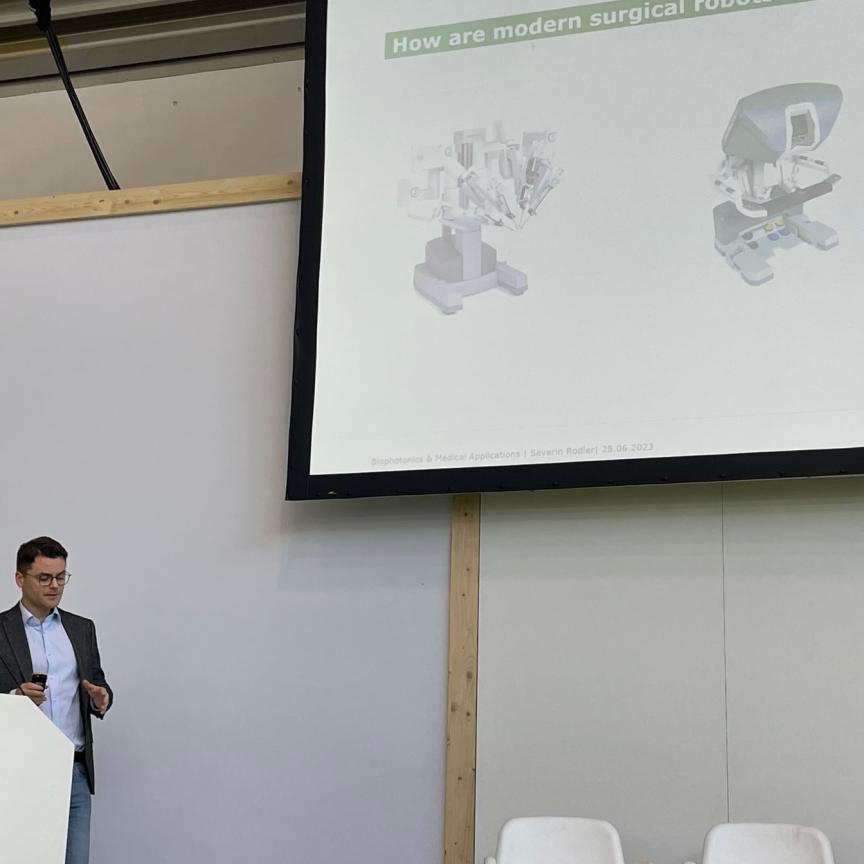Optics or lenses are an essential component of any imaging system in order to focus the image of the examined object onto the camera sensor. They can be used to remove parallax or perspective error, or provide adjustable magnifications, field of views, or focal lengths.
Lenses continue to evolve in order to be able to accommodate the changing needs of imaging systems for a variety of applications and use cases, with consumer electronics driving demand for video capture. Other important markets include automotive, medical, security and manufacturing, with sensors being developed in different sizes and designs.
This demand is driving growth in the lens market, according to the latest figures from market intelligence and advisory firm Research Dive, the global industrial machine vision lens market is predicted to grow at a stable compound annual growth rate (CAGR) of 6.1%, thereby garnering a revenue of $9,537.4 million by 2026.
The report, Global industrial machine vision lens market, states that the drivers for this include the need for analysis and inspection of the operational flow in various industries, meanwhile, increasing inspections in many industrial organisations is predicted to drive the market further.
The report predicts that the robotic cell sub-segment will have the fastest growth rate, with a CAGR of 7.1% during the estimated period. Robotic cell deployment type, says Research Dive, is the most cost-effective type and requires minimum labour force to assist the inspection work.
Lenses and optics for imaging on the market now
Vendors that offer lens technology include camera manufacturer Basler, which has its own range of standard and premium lenses. The standard product line is designed for fast cameras with a lower resolution. It has a good price/performance ratio, with lenses priced to correspond to the requirements of many cost-sensitive applications. The premium product line is available for more demanding applications, and the lenses offer high resolution, low distortion and low vignetting.
IDS is another example of a camera manufacturer offering its own lens line. The company’s C-mount lens series provides resolutions of 5, 8 and 10 megapixels, as well as focal lengths of 4 to 75mm and different optical classes. The lenses cover sensor sizes from ½-inch to 1.1-inch. The aperture and focus can be fixed mechanically if required, which ensures brightness and image quality remain constant, even if the lens is exposed to vibration.
Available from Edmund Optics is a range of imaging lenses for a variety of imaging needs, including telecentric lenses, liquid lenses, those with fixed focal length, zoom lenses, and shortwave infrared imaging lenses. A selection of imaging lens accessories is also available, including filters, and mounts or adapters for additional functionality.
Fujifilm offers a wide range of prime, zoom and telephoto lenses. Its most recent launch is the Fujinon GF35-70mm interchangeable lens for large-format cameras. Designed as a compact and lightweight zoom lens, it weighs around 390g, with a focal length range covering from 35mm to 70mm. The company expects the portable form factor to help broaden the scope of applications for GFX camera systems, equipped with a large format sensor.
Kowa lenses have been used for applications in a wide range of industries such as automotive, logistics, pharmaceutical and food. Here, they perform tasks such as defect detection, surface inspection or shape and dimensional inspection.
TracePro from Lambda Research is used to analyse non-imaging aspects of imaging systems, such as stray light, polarisation effects, thermal loading, bulk scatter, and fluorescence. In addition, its solar emulator and optimisation features ensure solar collectors perform at peak efficiency.
Optotune’s focus-tunable liquid lenses are designed to provide a versatile, compact and cost-effective solution to the challenge of keeping products in focus under the camera or quickly scanning various objects at different distances. Thanks to the absence of translational mechanics, these lenses can focus within a few milliseconds, ensuring robustness and reliability with a lifetime of billions of cycles for use in applications such as quality control, packet sorting, box filling, palletising, barcode reading, robot vision and 3D image stacking.
Resolve Optics offers compact fixed and zoom lenses for vision applications including parts recognition, precise component placement, automated alignment and placement, and automated inspection of manufactured components. The company recently reported how its custom designed high-contrast shortwave infrared lenses have been used for agricultural sorting applications by optimising both the resolution and imaging contrast achievable with the product.
A recent addition from Schneider-Kreuznach to its range of Zirconia lenses is the Zirconia 3.3/90. Designed for line sensors, it has a common magnification 0.1x. The main fields of application are flat panel display and PCB inspection. It has a uniform imaging performance over the whole field of view and, like other products in the Zirconia series, it comes with a V48 mount.
Sill Optics provides a range of telecentric lenses for machine vision applications. The company offers products that include lenses with coaxial light coupling to entocentric macro and wide-angle lenses, and telecentric illumination. Recent additions include the S5VPJ0303 and S5VPJ0305 telephoto lenses, including a tunable liquid lens. They offer high-speed adjustment of focal length to compensate for working distance deviation.
Thorlabs offers a wide variety of C-mount camera lenses for machine vision, including standard fixed lenses, zoom lenses, high-magnification zoom lenses for macro applications, modular zoom lens components, and telecentric lenses. These lenses are compatible with all of the company’s CCD and CMOS cameras. Thermal imaging lenses are available to focus infrared light without introducing spherical aberration, and the company can provide objective, scan, and tube lenses for use in constructing optical systems for machine vision applications.
Among its most recent developments in lenses, Tamron expanded its range of fixed focal length lenses for the machine vision market with the MA23 and MA111-VIR series. The MA23 series targets industrial inspection requirements with its small size and image quality optimised for shorter distances. The MA111-VIR series is optimised for larger sensor sizes and resolutions, with 1.1-inch sensor format and up to 24-megapixel resolution, addressing a large field of industrial and non-industrial high-resolution applications.
This is not an exhaustive list. If you provide optics or lenses for imaging and would like your company to be included, please let us know at: editor.imaging@europascience.com.
Edmund Optics: Featured lens product
Edmund Optics’ TECHSPEC 120i Infinity Corrected Objectives for machine vision systems are designed to reduce the size, overall system length, and weight of an imaging system while maintaining excellent optical performance.
Miniaturisation is currently one of the top trends in optics, especially in the medical devices sector as laboratories shift from bulky setups to more compact and portable units. The TECHSPEC 120i Plan APO Infinity Corrected Objectives are the most compact industrial infinite conjugate microscope objectives on the market and are designed to connect directly to machine vision cameras. Using 120mm tube lenses instead of 200mm or 180mm, these objectives offer the same high-resolution, diffraction-limited performance as other previously available options. They feature C-mount threading to provide easy integration into a wide range of machine vision systems and are designed for use with 1.1” sensor formats.
IDS NXT: Featured lens product
A new camera enables AI live overlays in compressed video streams: The IDS NXT all-in-one AI system is being continuously expanded. Brand new: the intelligent industrial camera IDS NXT malibu. It combines consumer technology from Ambarella – known from action cams – with industrial quality and expertise from IDS Imaging Development Systems.
The result is a new class of intelligent industrial cameras that act as edge devices and are able to display AI overlays in the compressed live video stream (RTSP). Thanks to the special chip, they are not only able to perform AI-based image analyses at high speed (>25fps), but also offer outstanding image quality thanks to the auto enhancements of the integrated ISP. This is new in the industrial camera market – and a further step towards opening up new applications in the industrial and logistics context with intelligent image processing. The IDS NXT malibu has recently entered series production. Find out more about the comprehensive AI vision system at the IDS website.
Navitar Pixelink: Featured lens product
Pixelink offers several cameras with HDR – high dynamic range functionality. A function of the sensor, these cameras can compensate for hotspots or shadows in line, avoiding time-consuming post-production. This will improve the quality of users’ data and the speed of delivery.
An HDR sensor captures multiple images at different gain settings simultaneously. These images are combined to average out values, giving a more balanced image.
These Pixelink cameras have HDR sensors:
- For 10GigE cameras, Navitar offers the PL-X9520 and PL-X9524.
- For USB3 cameras, it has the PL-D957 and PL-D753.
- For its microscopy line, it has the M3-CYL and M7-CYL.


